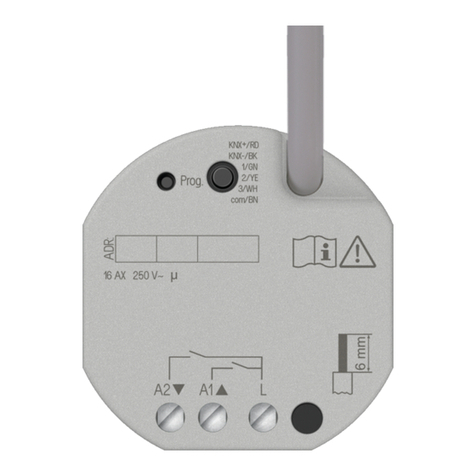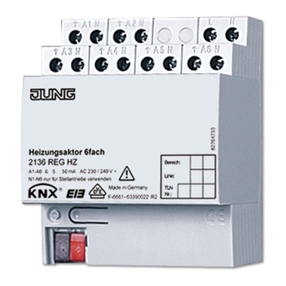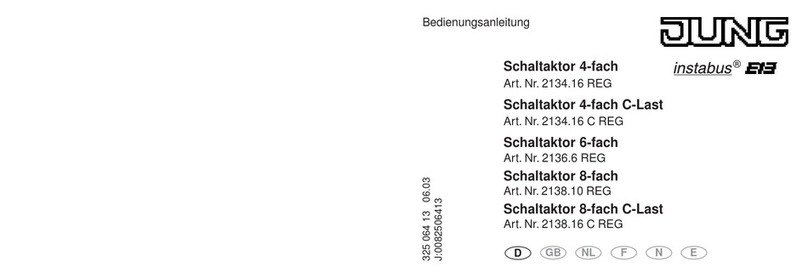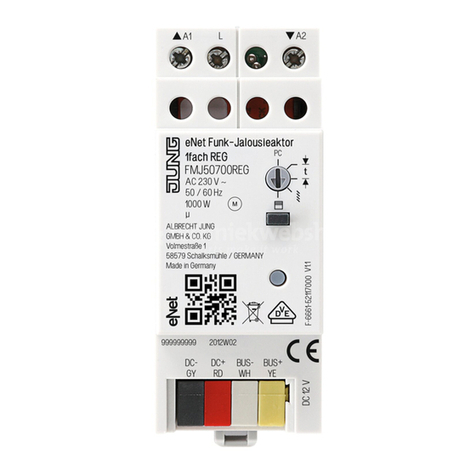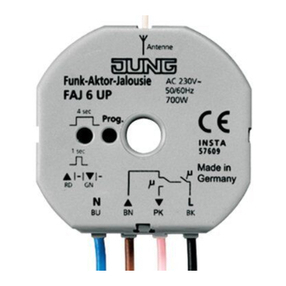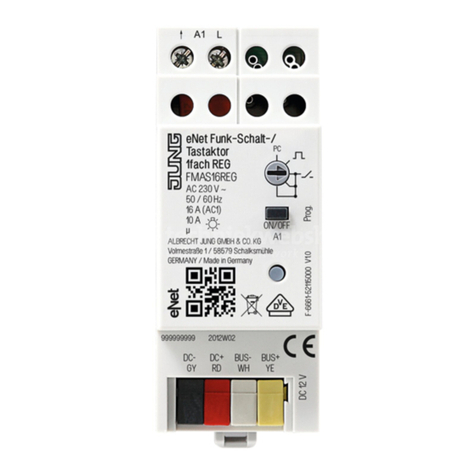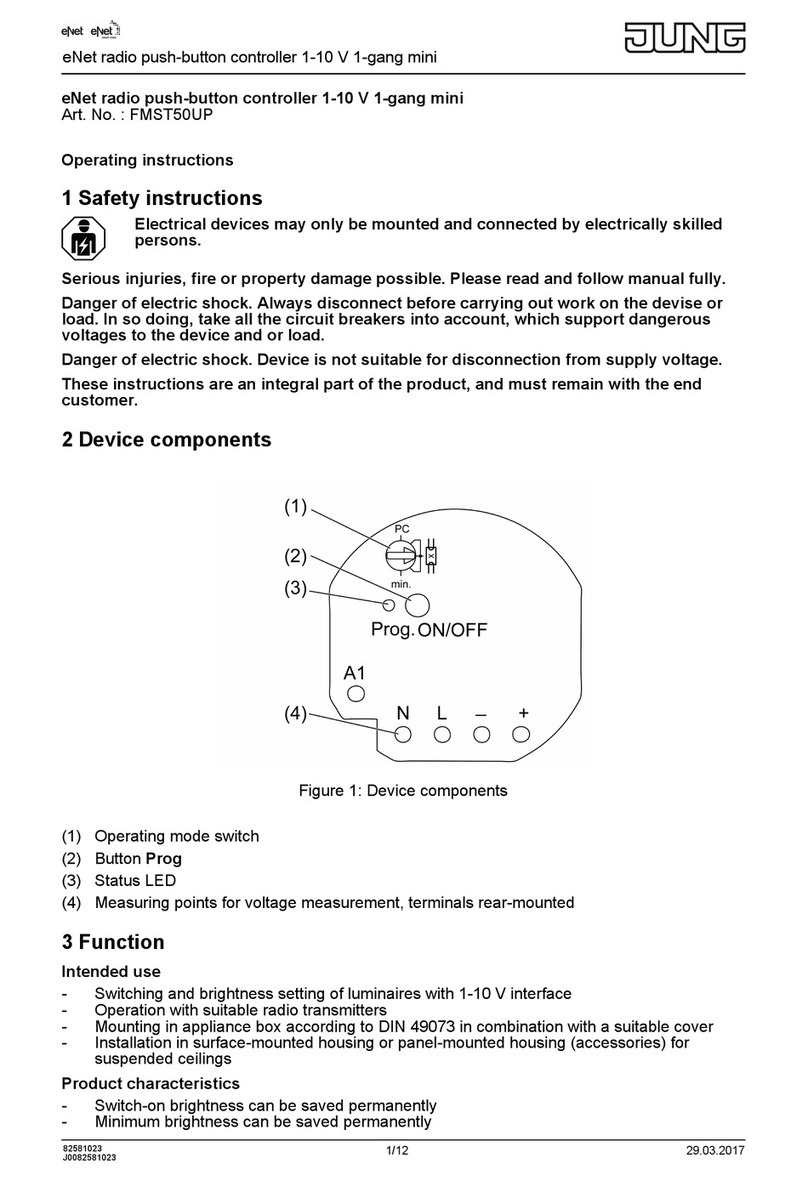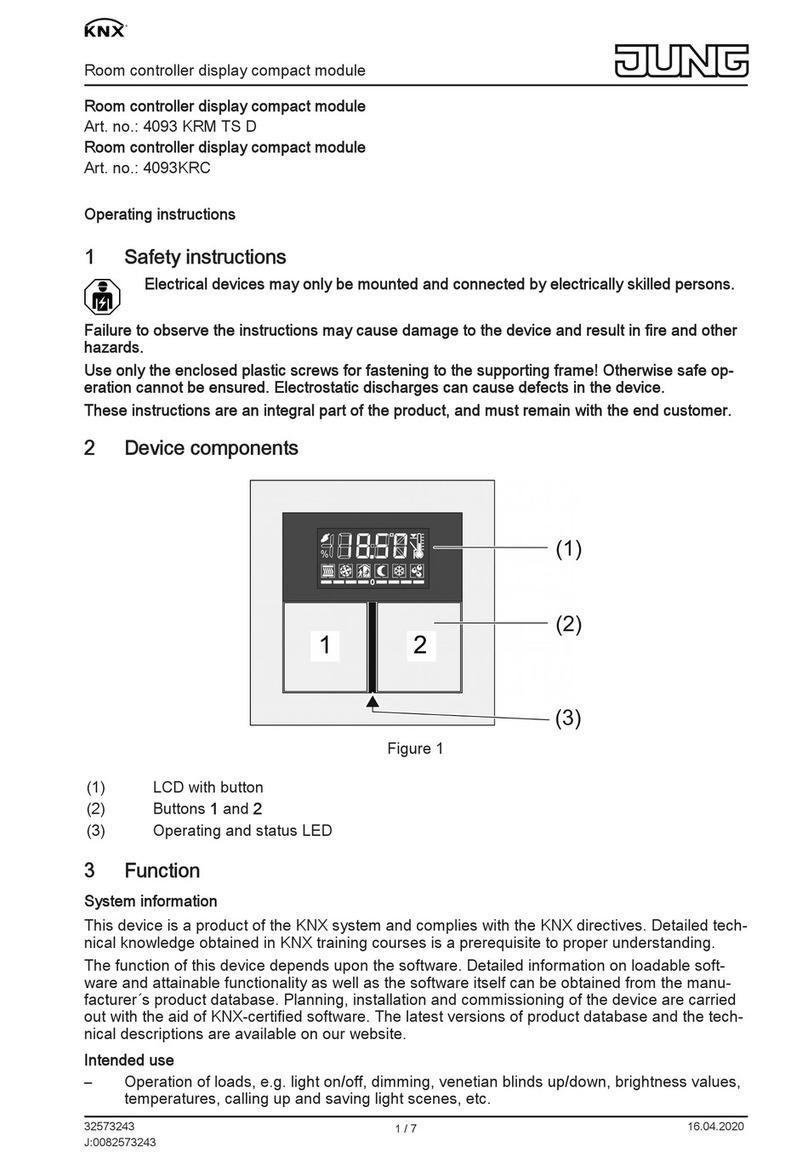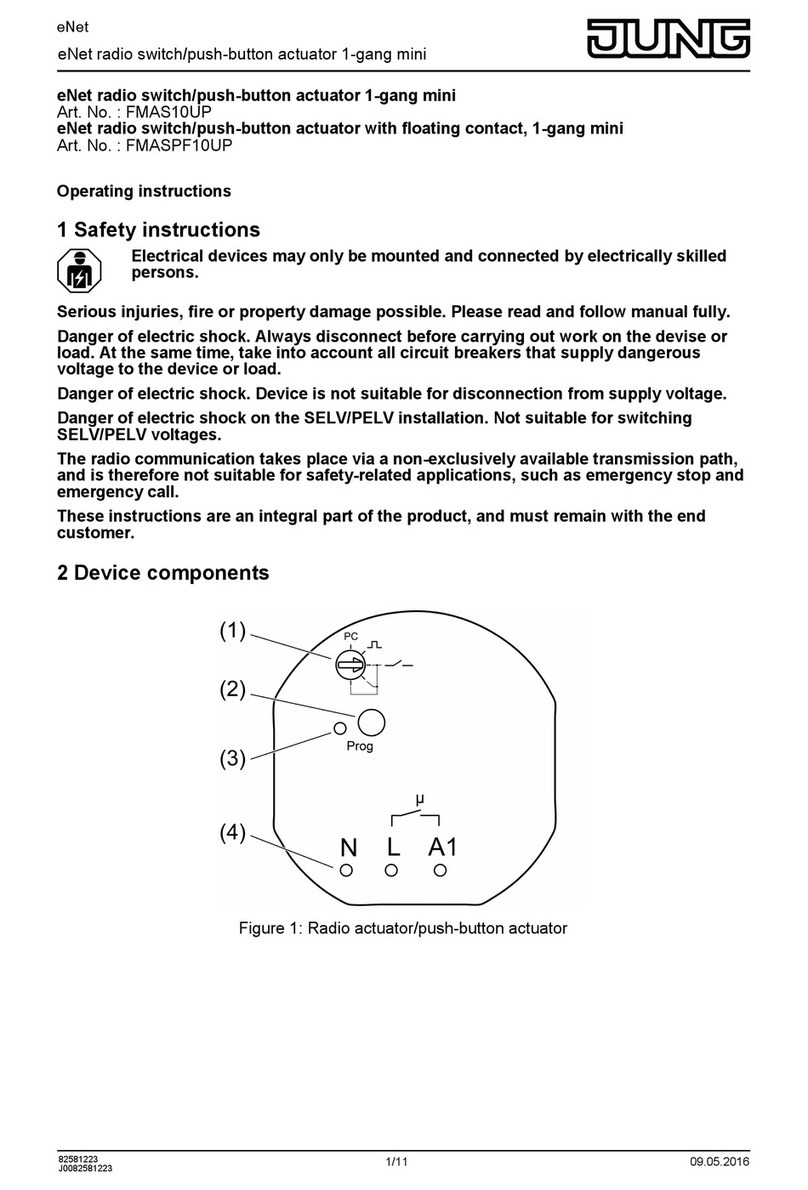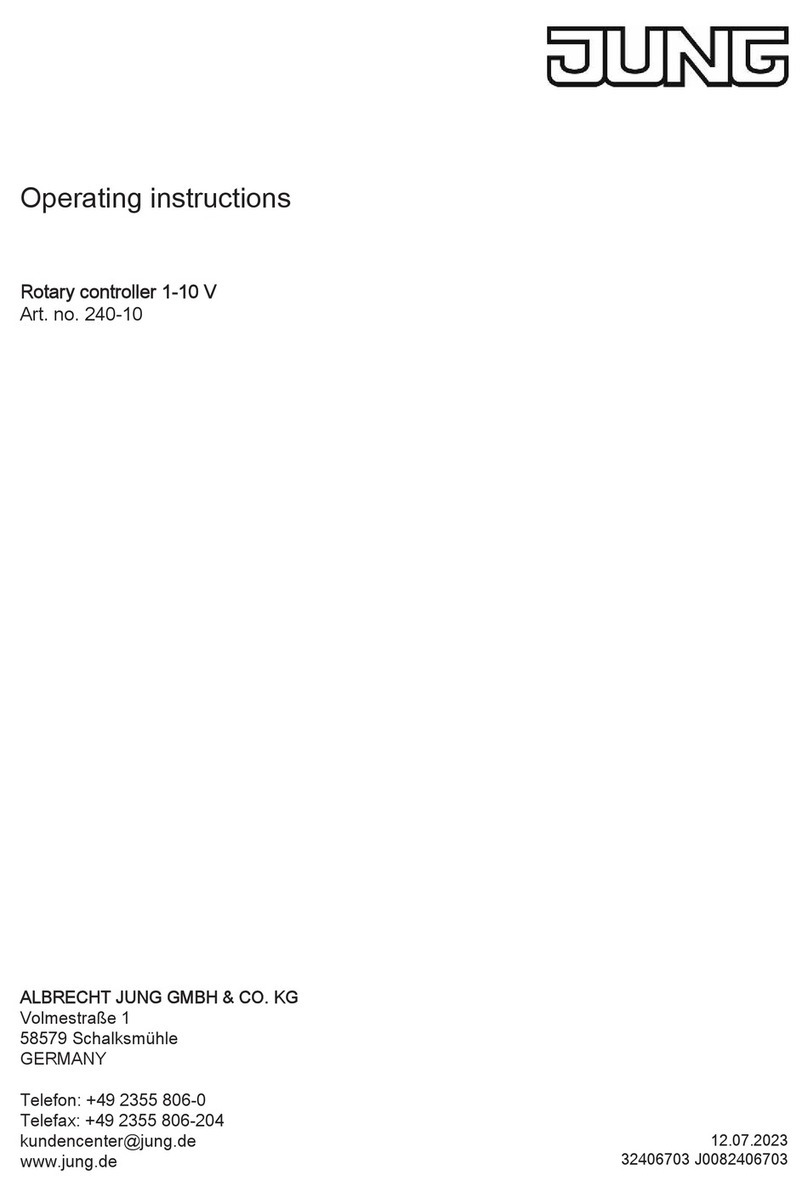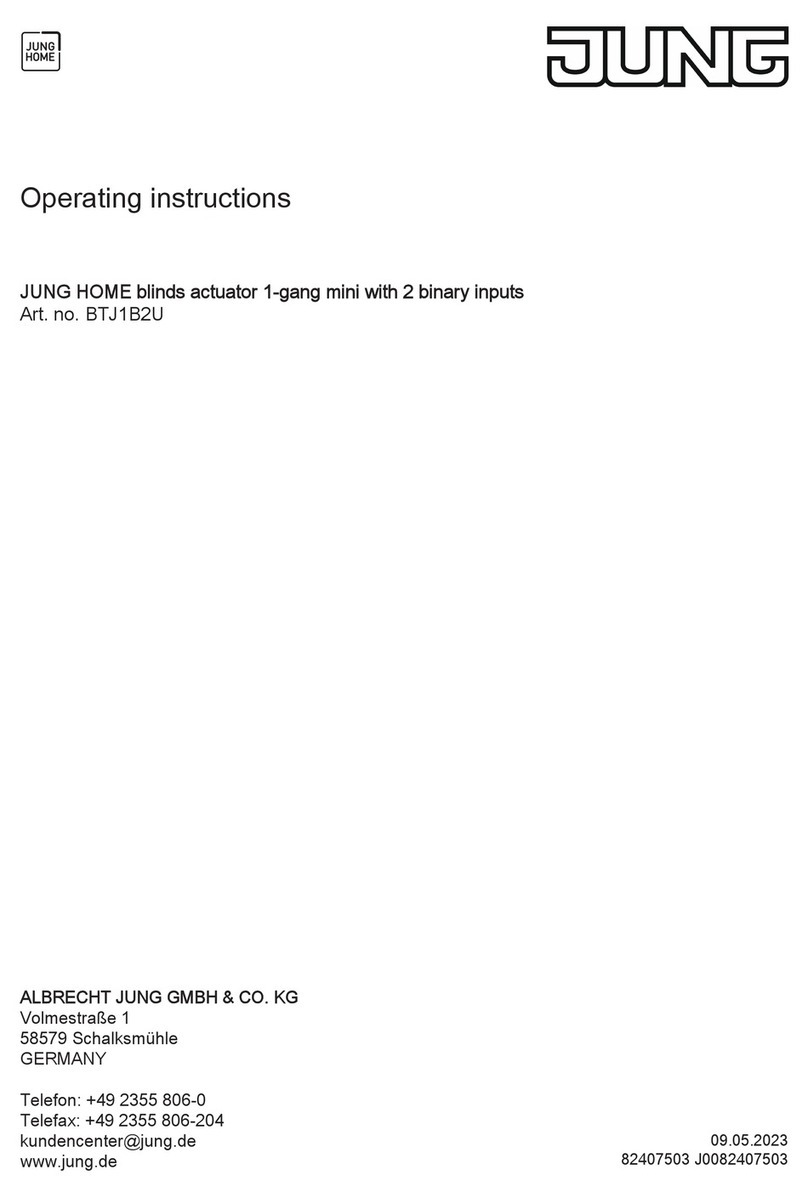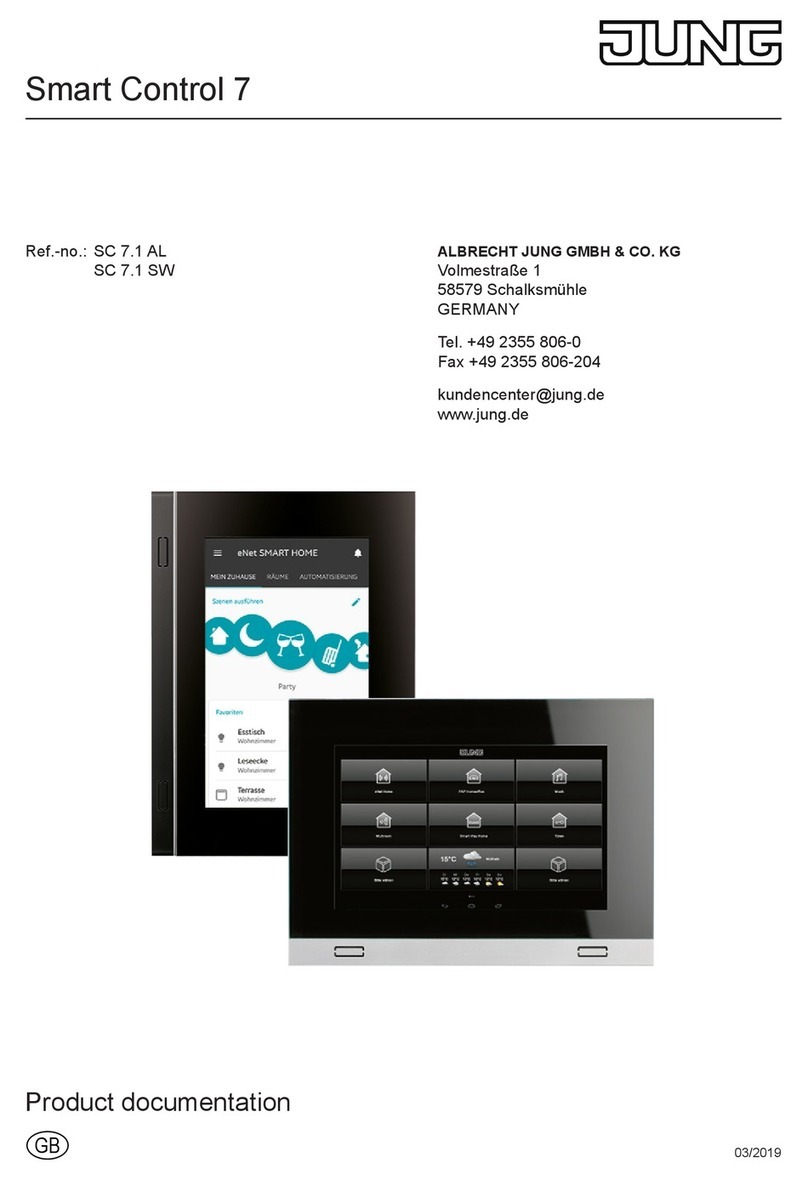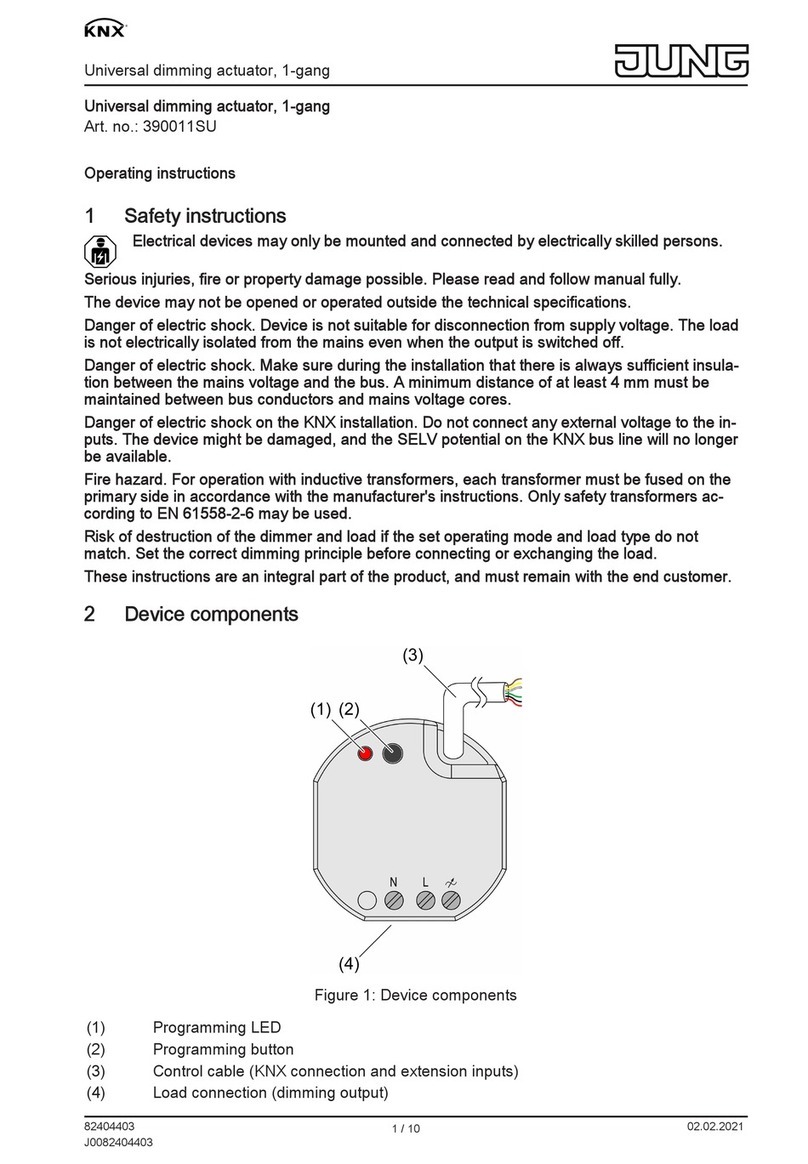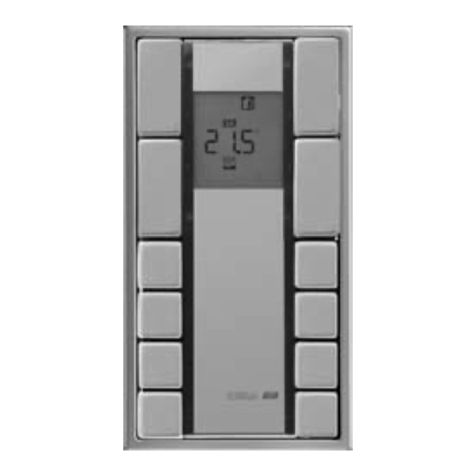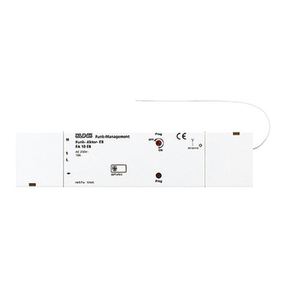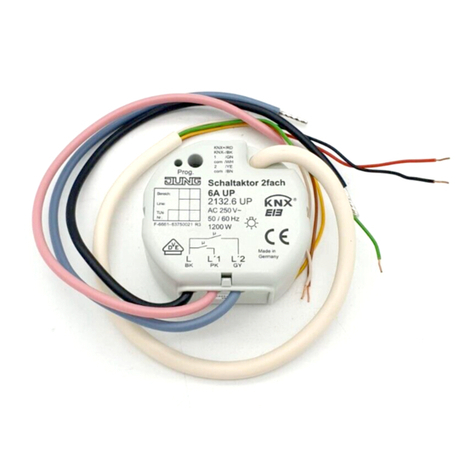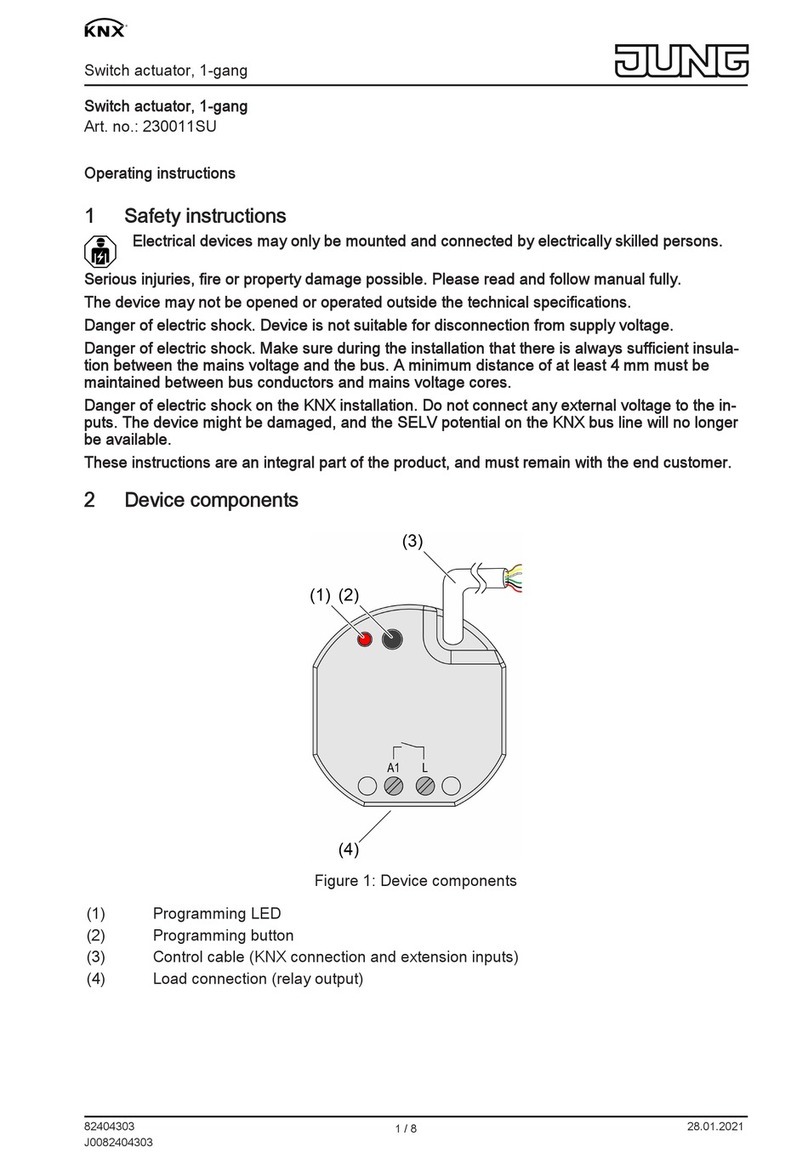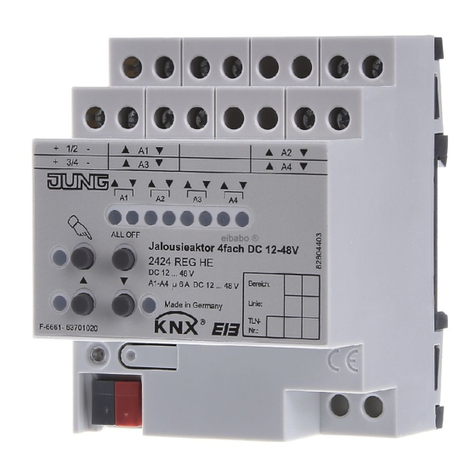
Art.-No.: 2095 LUX
2.4 Commissioning
After the device has been connected to the bus and mounted on the ceiling, it can be put into
operation. Commissioning is essentially confined to programming via the ETS, inserting the rigid
fibre-optic rod and calibrating the brightness sensor.
Loading the physical address and application software
The Programming LED is located in the sensor opening (8) on the front side of the device.
The device is connected and ready for operation.
An appropriate device must be set up and configured in the ETS project.
o Switch on the bus voltage
o Activating Programming mode: press the programming button (5).
The Programming LED flashes.
o Program the physical address with the help of the ETS.
The programming LED goes out.
o Write the physical address on the device label.
o Load the application data into the device using the ETS.
Inserting a rigid fibre-optic rod with straight incidence
The controller is directly above the work surface (picture 2).
o Insert the rigid fibre-optic rod with a straight incidence (6) approx. 10 mm into the sensor
opening (8).
Inserting a rigid fibre-optic rod with sloping incidence
The controller is above and to the side of the work surface (picture 3).
o Insert the rigid fibre-optic rod with a sloping incidence (7) approx. 10 mm into the sensor
opening (8).
o Align the rigid fibre-optic rod (7) in such a way that the longer side of the rod points towards
the work surface to be measured.
i When using a rigid fibre-optic rod with a sloping incidence, be sure to calibrate the
controller.
Calibrating the controller
The installation height, lighting situation and degree of reflection influence the controller.
Calibrate the controller for the most accurate constant light regulation or brightness
measurement or if the rigid fibre-optic rod is used with sloping incidence (7).
The controller is calibrated via a "Calibrate setpoint" bus telegram. The controller programming
must make the reception of this telegram possible.
Calibrate the controller with as little daylight incidence as possible. If necessary, darken the
room.
Use a calibrated light meter.
o Switch on the lighting to be controlled above the work surface.
o Measure the lighting strength on the work surface.
o Set the lighting so that the light meter shows the required setpoint of the preset operation
mode, e.g. 500 lx.
o Send a "Calibrate setpoint" telegram to the controller via the bus.
i For further information on calibration, see "Software description" (see page 18-19).
Page 8 of 27
Fitting, electrical connection and operation
